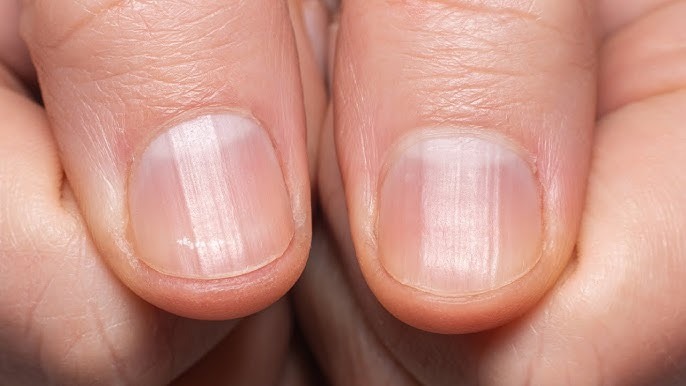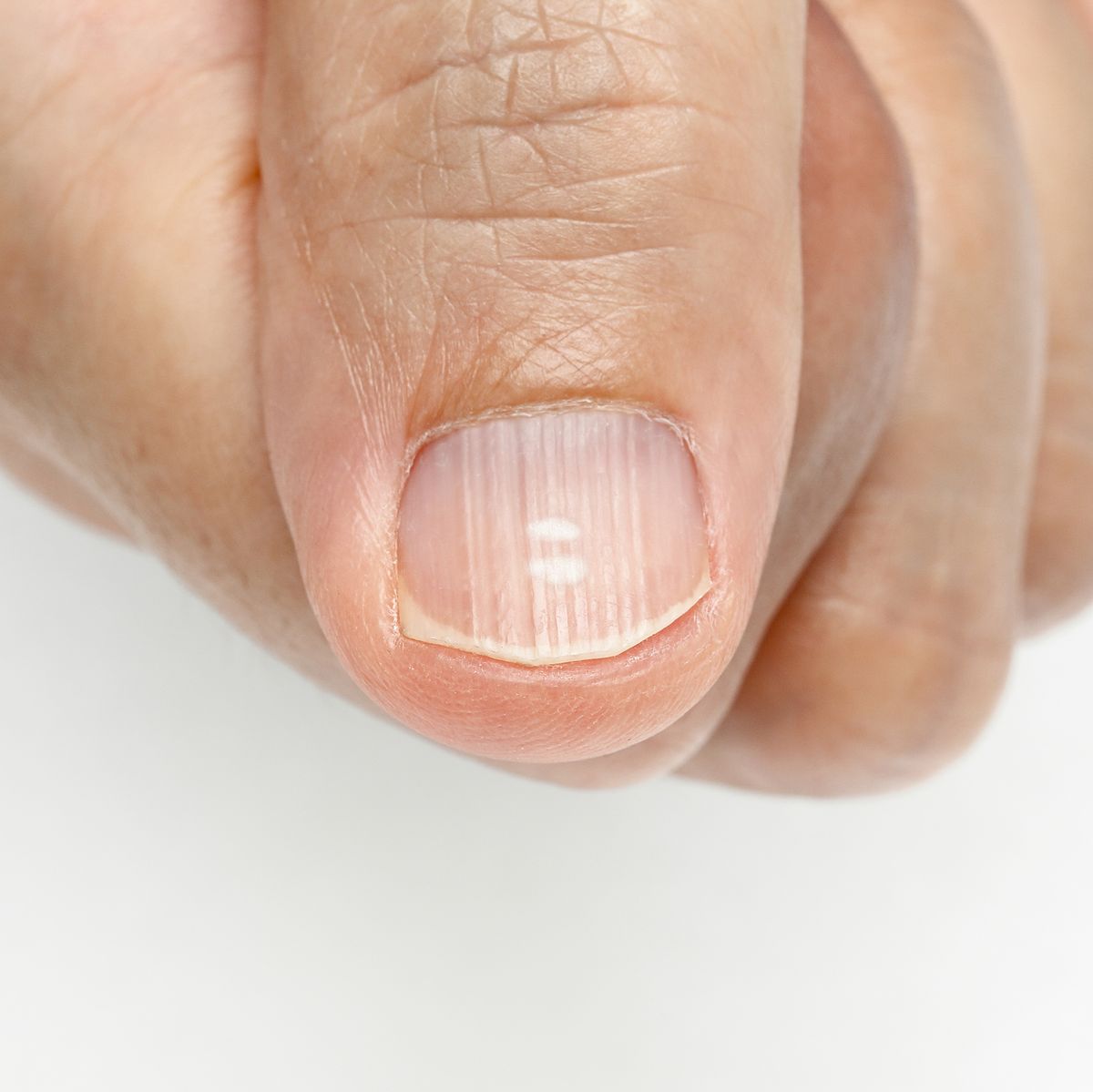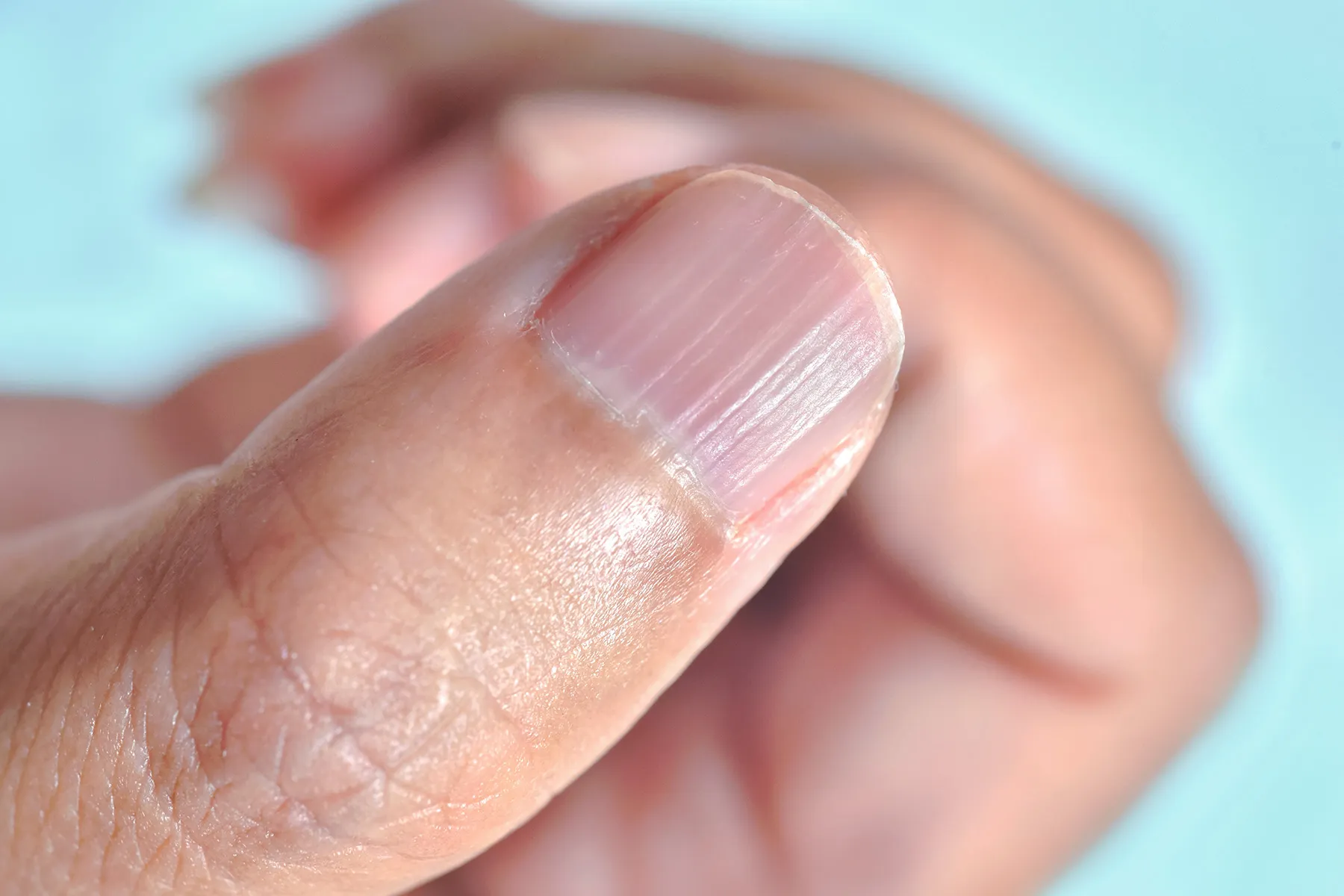
Nail Ridges After 40: A Common But Overlooked Sign of Aging
As people age, they often notice changes in skin, hair, and joints—but fingernails also undergo transformation. One of the most common and visible changes after age 40 is the appearance of vertical lines or ridges on the nails. These ridges, known medically as longitudinal striations, run from the base of the nail (near the cuticle) to the tip. While usually harmless, they can sometimes hint at deeper health or nutritional concerns.
Understanding what these lines mean, what causes them, and how to respond is key to maintaining not just nail health but overall well-being.
What Are Vertical Nail Ridges?

Vertical ridges are linear elevations that extend from the cuticle to the tip of the nail. They are distinct from horizontal ridges (Beau’s lines), which are more often associated with serious systemic stress or illness.
In many cases, vertical ridges are simply a normal sign of aging, much like wrinkles or graying hair. However, changes in the depth, number, or texture of these ridges can indicate underlying issues that warrant attention.
Why Vertical Ridges Appear More Prominently After Age 40

Structural Changes in the Nail Matrix
The nail matrix, located beneath the cuticle, is where nail growth begins. As a person ages, the efficiency of cell turnover in the nail matrix slows down. This results in inconsistent production of keratin—the primary structural protein of the nail—leading to uneven surfaces or ridging.
Reduced Keratin Production
Keratin production slows with age due to changes in hormone levels, slower metabolism, and general wear and tear. This makes the nail plate thinner and more likely to develop surface irregularities.
Loss of Moisture and Oil
Natural oils and moisture in the nail bed help keep nails smooth and pliable. With age, sebaceous gland activity decreases, leading to drier nails. Dehydrated nails tend to show ridges more prominently.
External Exposures Accumulate Over Time
Decades of exposure to handwashing, cleaning agents, manicures, and environmental stressors can compound over time, gradually weakening the nail plate and accentuating ridges.
Nutritional Deficiencies That May Contribute to Nail Ridges

As the body ages, nutrient absorption becomes less efficient, even with a balanced diet. Several vitamins and minerals directly influence nail health:
- Biotin: A B-complex vitamin essential for keratin infrastructure. Low biotin can cause brittle, ridged nails.
- Iron: Deficiency may lead to spoon-shaped nails or ridging. Iron is critical for oxygen transport and cellular repair.
- Zinc: Important for tissue growth and repair. A lack of zinc can result in white spots or ridged nails.
- Magnesium: Supports protein synthesis and nail integrity.
People over 40 are more likely to have subclinical deficiencies due to digestive inefficiencies, medication interference, or dietary gaps.
When Vertical Ridges Could Indicate an Underlying Health Problem

While mild ridges are often harmless, sudden changes in nail appearance should be taken seriously. Medical evaluation may be necessary if any of the following symptoms accompany nail ridges:
- Discoloration (yellow, brown, or black streaks)
- Changes in nail thickness
- Pain, inflammation, or redness near the cuticle
- Nail separation from the nail bed
- Frequent nail splitting or crumbling
Potential health conditions that may manifest in nail changes include:
- Thyroid disorders: Both hypothyroidism and hyperthyroidism can alter nail texture and growth patterns.
- Rheumatoid arthritis: May cause distorted nail growth or chronic inflammation in nail tissues.
- Peripheral vascular disease: Poor blood flow can affect nail health and cause pronounced ridges.
- Psoriasis or eczema: Skin disorders often involve nail abnormalities.
- Anemia or malnutrition: Long-term deficiencies affect nail strength and resilience.
Are Horizontal Ridges More Concerning?
Yes. Horizontal ridges (Beau’s lines) typically reflect a disruption in nail production due to systemic stress. Causes include:
- Severe infections or illness
- Chemotherapy
- High fever
- Uncontrolled diabetes
- Physical trauma to the nail matrix
Unlike vertical ridges, which develop gradually, horizontal ridges often emerge abruptly and are more directly linked to specific health events.
Best Practices for Nail Health After 40
Hydration and Moisture Retention
Daily moisturizing is critical. Use hand creams and cuticle oils to prevent drying. Ingredients like shea butter, vitamin E, and lanolin help lock in moisture.
Nutrient-Rich Diet
A balanced diet that includes leafy greens, lean proteins, nuts, seeds, eggs, and legumes can help support healthy nail growth. Foods rich in biotin, zinc, and magnesium are especially important.
Consider Supplements
If your diet is limited or you suspect deficiencies, consult your healthcare provider about supplements. Biotin, iron, and collagen are commonly recommended, but testing is advised before supplementation.
Minimize Damage
- Avoid nail biting and picking
- Limit use of harsh nail polish removers
- Don’t use nails as tools (e.g., opening cans)
- Wear gloves when cleaning or gardening
Nail Care Routine
- Keep nails trimmed to avoid snagging
- Gently file in one direction instead of sawing back and forth
- Avoid acrylics or gel nails that require aggressive removal processes
Frequently Asked Questions (FAQ)
Can vertical ridges be completely removed?
No, if they’re age-related, they can’t be “cured.” However, hydration, nutrition, and gentle care can reduce their appearance.
Do vertical ridges mean I have cancer or a serious disease?
Not usually. Isolated ridging is rarely linked to cancer. Sudden or dramatic changes should be evaluated, but ridges alone are typically benign.
Should I buff ridged nails to make them smooth?
Buffing can temporarily smooth the nail, but excessive buffing thins the nail plate and increases breakage. Do it sparingly and with gentle tools.
Does nail polish make ridges worse?
No, but frequent use of acetone-based removers can dry the nails and accentuate ridges. Use polish moderately and opt for hydrating base coats.
Final Thoughts
Vertical ridges on the nails after age 40 are extremely common and generally harmless. They reflect the natural aging process, shifts in nutrient absorption, and years of environmental exposure. While they’re often nothing to worry about, paying attention to your nails is one more way to monitor your internal health.
By maintaining good hydration, eating a nutrient-dense diet, practicing gentle nail care, and staying alert to changes in texture, you can preserve the strength and appearance of your nails well into later life.
If you’re ever unsure whether a change in your nails is normal, don’t hesitate to seek medical advice. Your body has many ways of communicating with you—your nails are just one more voice in the conversation.
